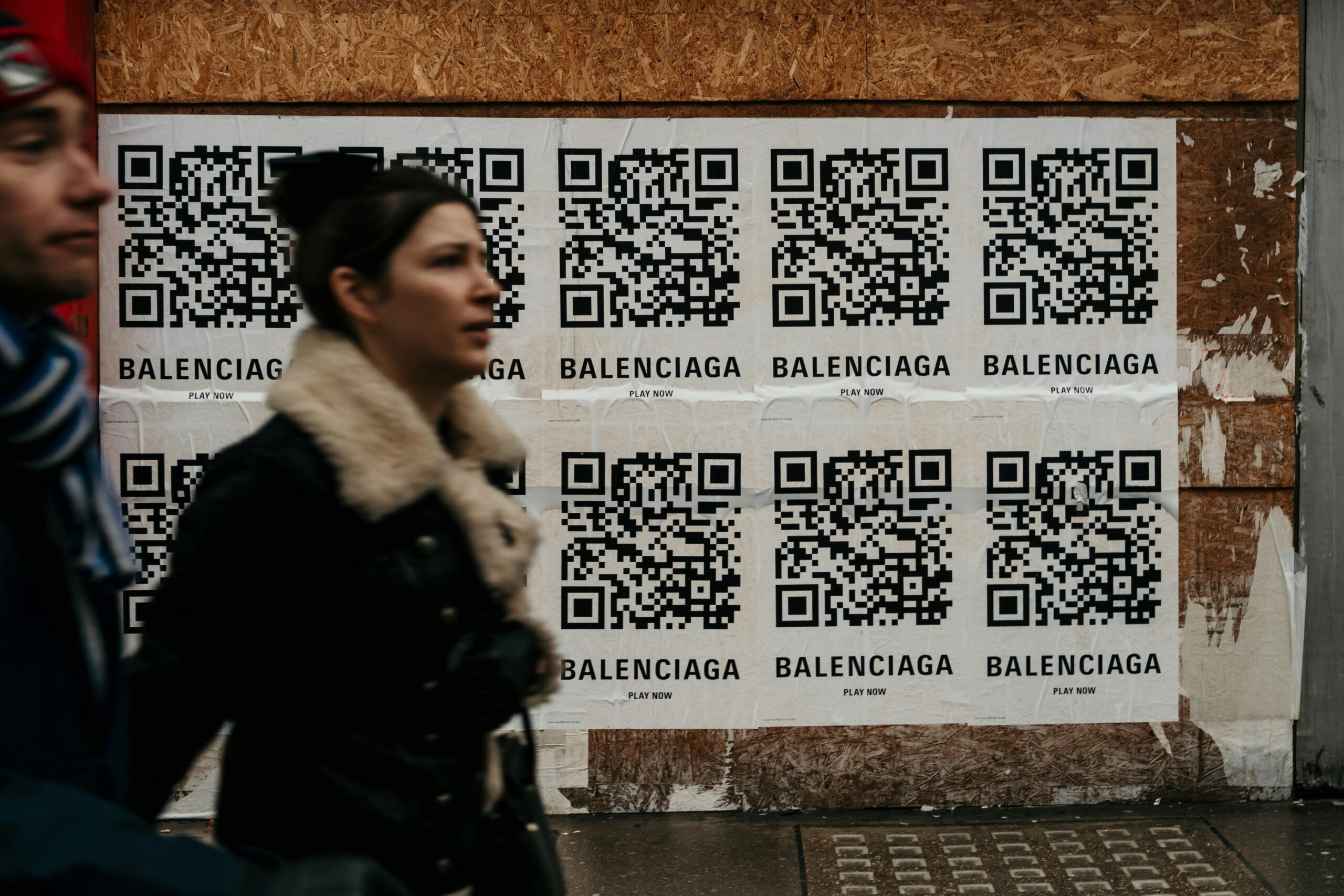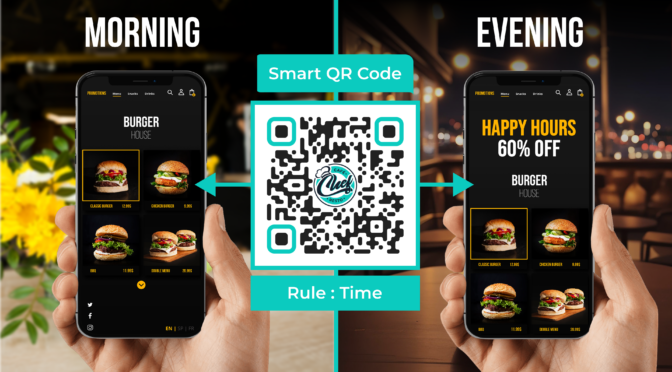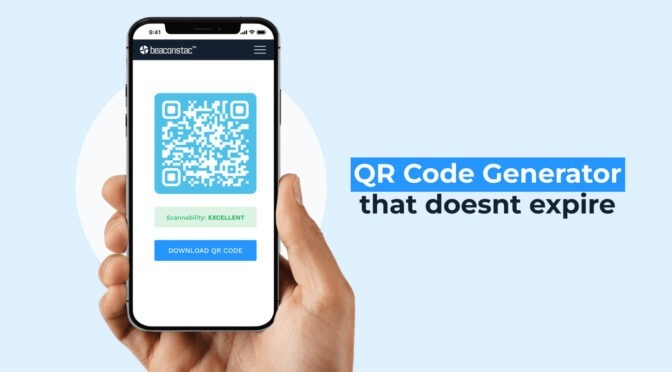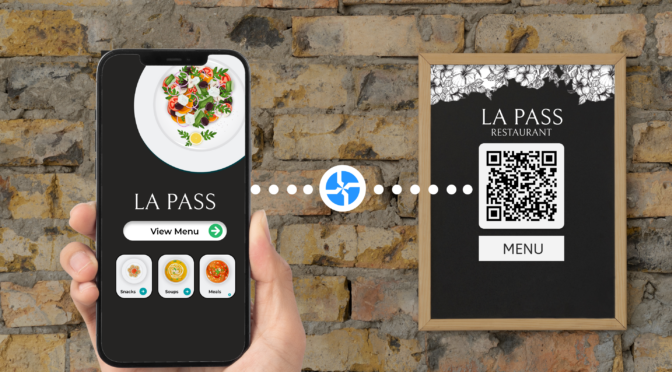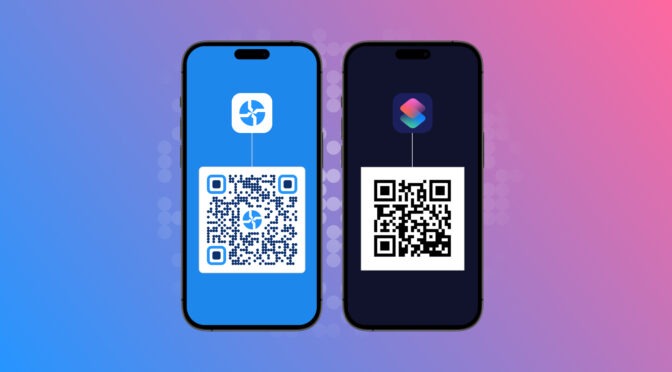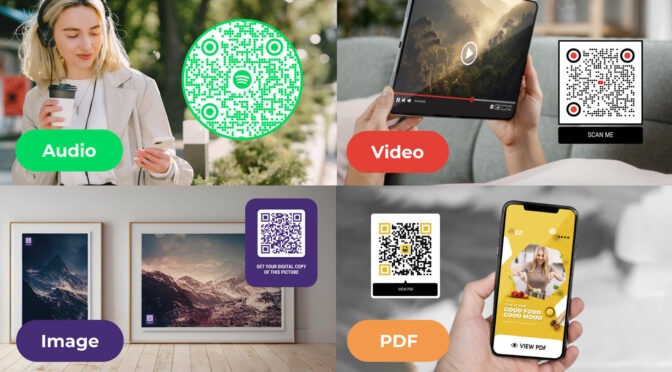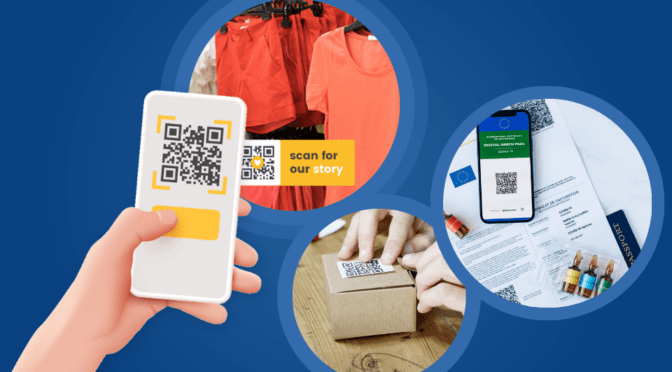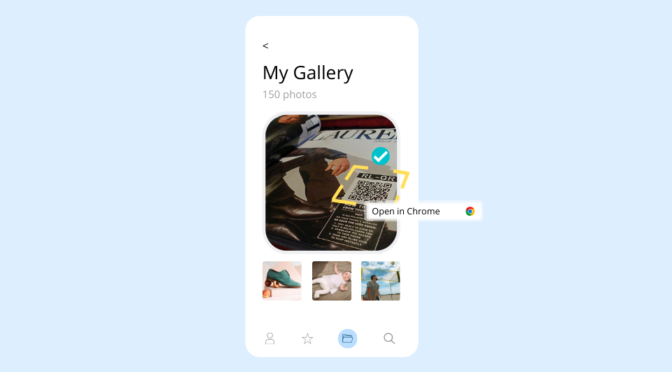The QR Code omnipresent today inherited a very different world from the stripped barcodes. The former was the promising young candidate in the world of machine-readable codes that not many put their faith in—not even their makers. Thirty years later, we all know the rest is history. In 2024, we stand at the crossroads of yet another disruptive moment in machine-readable codes: “Project Sunrise 2027.” This is a bird’ s-eye view of the fascinating history of QR Codes from 1994 to 2024.
It all began in the 1960s, at the heart of Japan’s bustling, post-war economy.
Supermarkets were sprawling everywhere at that time, selling everything from groceries and electronics to pottery and concert tickets.
Long queues at the cash counter were synonymous with Japan’s (and the rest of the developed world’s) booming economy. But one group of people was the underdog of this development: cashiers.
Cashiers were at the heart of the new wave of consumerism, manually keying prices in cash boxes for hundreds, potentially thousands of buyers every day.
However, the long work hours and repetitive tasks began to impair their physical and mental health. Reports of carpal tunnel syndrome—numbness caused by a pinched nerve in the wrist—among cashiers became an occupational disorder.
Soon, grocery retailers and packaged goods manufacturers’ unions began pressing for measures to improve cashiers’ working conditions at crowded retail outlets.
Machine-readable codes were available, but the technology was unsuitable for small to mid-sized businesses because of complications in setting up and high maintenance costs, among other things.
The 1970s: American tech behemoth IBM entered the scene
International Business Machines (IBM) responded to the retail crisis by reinventing an existing machine-readable code used in the automotive industry to track car parts. It was the bull’s-eye code. In those days, the tech had limited use outside factory setups. But everything was about to change.

IBM engineer George Laurer reinvented the bull’s eye code into the vertical bar code (now called a barcode) you still see today. It was designed to register product details with a specialized scanner.
IBM’s reinvention was hugely successful and would be absorbed into the Universal Product Code in 1973, or UPC, the global standard for machine-readable codes. Subsequently, the point-of-sale (PoS) was also developed, IBM being one of the first PoS vendors, which further integrated barcodes into the commercial scene.

At their behest, the barcode and PoS successfully sped up the cash counter flow at Japanese and Western supermarkets—this time without straining the cashiers. For the next two decades, barcodes would be an indisputable piece of technology in the retail world.
The widespread use of barcodes spawned global standardization efforts such as the GS1 or “one global system” (a collaboration between the UPC and its European counterpart, the EAN) because of the need for a uniform product coding system. Decades later, GS1 would play a significant role in ushering in a new era, which you’ll see later in this post.
Meanwhile, in Japan, Denso Wave, a manufacturing technology company, was one of the key players supplying integrated barcode systems, mainly to local industrial clients. But they also had a special project that was about to change retail history forever.
1994: A special project (in confines of conveyor belt)
Between the 1960s– and –70s, when the barcode was still being adopted in Japan, Denso Wave began getting requests from their industrial clients for an updated barcode.
Denso’s clients (some say it was car-maker and Denso’s parent firm, Toyota) wanted a machine-readable code to hold more information than barcodes’ 20 alphanumeric character limit.
The oddity of barcodes was that large-scale manufacturers had to use a handful of them in a product to store all the information, which slowed down the scanning process.
One Denso Wave team member, Masahiro Hara, took to finding an alternative to the barcode. Some sources say Hara initially tried to increase the capacity of existing barcodes but without success. According to reports, Hara devised an idea for a new machine-readable code while playing the board game Go.

Hara began working on the new code, this time not shaped like a bar but a square filled with a pixel-like pattern inspired by the board game image you can see above. In doing so, Hara was solving the problem of the lower space-holding capacity of barcodes and how these codes functioned.
Barcodes were one-dimensional (identifiable from an arrangement of horizontal lines), and one had to scan them horizontally.
Being in a grid-like square, Hara’s new code was scannable horizontally and vertically (hence, it was called two-dimensional). Being two-dimensional also meant the new code could store more data (4000+ alphanumeric characters) than the barcodes.
Soon, Hara’s team landed a successful iteration of a new machine-readable code. They named it the Quick Response Code or QR Code because it was tens of times faster than the barcode. The new code also worked with 30% damage, which was impossible with the barcode.
But the promising new invention had one flaw: machines (cameras) took time or could not read the QR Codes amidst distractions or when scanned from an angle.
One day, while returning home, Hara noticed a building standing out from the rest. The scene lingered in his mind and sparked an idea to experiment with frames for QR Codes.
“At the top of the building was a geometric pattern that gave me the idea to create a 2D code that used a pattern,” Hara said. Then, a hunt began to find a unique symbol to help machines recognize a QR Code, even among other elements such as images and texts.
During their research, the team found that machines could read code faster when some pattern was attached to the three corners. However, it was unclear which pattern they should use that is not in any other code.
To find a unique pattern, Hara and his team reportedly parsed dozens of symbolic and textual materials—magazines, newspapers, books, and periodicals—from around the world (using a special software they developed).
Finally, after three months, the team found a pattern that was not used anywhere else: squares (called eyes) in a unique ratio of black and white (1:1:3:1:1). That would become the position marker of QR Codes.
Two years later, the final product was a game-changer. The QR Codes solved all the barcode’s shortcomings (mainly data storage and unidirectional scannability) and had more in store for Denso’s clients.
In successive years, QR Codes would receive almost all the major industry-standard certifications in Japan and globally (including ISO). Denso Wave publicly announced QR Codes in 1994.
😆 Fun facts: During the development of QR Codes at Denso Wave, the early versions sometimes contained playful messages embedded within the QR Code intended for other engineers working on the project. We wonder what those messages were 🤔
However, despite the groundbreaking success of QR Codes during in-house testing, they were only promoted within Denso’s existing manufacturing clientele. Denso downplayed the use of QR Codes among ordinary individuals and small businesses at that time despite being fully confident in the product.
The 2000s: Pushing the limits
In the early 2000s, barcodes became ubiquitous in consumer goods. Japan’s (and the West’s) successful tryst with the technology was globally reported.
The popularity of barcodes was so great that the beeps of scanning at supermarkets defined the developed world in some way in popular culture.
But starting in the mid-2000s, barcodes began showing signs of needing an update. One of the most prominent shortcomings was the limited space to hold information: only 20 alphanumeric characters (slightly varying depending on the symbology used).
Barcodes’ character limit worked in the 1970s but not in the 2000s when the need for data storage morphed from basic SKU numbers to in-depth product data. Moreover, many businesses in Japan wanted to use Kanji and other special characters, which barcodes didn’t support.
Barcodes also needed expensive point-of-sale equipment to scan, which was becoming increasingly unaffordable for the stream of early-stage businesses entering the scene.
Finally, with more people queuing up in the supermarkets, barcodes started to slow down check-outs since they had to be scanned from a specific direction to register the information. Worse: cashiers had to manually parse stock books to register a product if a barcode was damaged or unscannable.
Factory assembly lines that used barcode scanners also suffered from the same slowdown.

A slow supermarket queue was an inconvenience to ordinary consumers. But for factory lines, it was a blow to the bottom line. Now widespread globally, the world was starting to realize the shortcomings of barcodes.
At that time, very few knew that back in 1994, technology had already been created that nullified every shortcoming of the barcodes (cue: Denso’s underestimation). Moreover, it was something the automotive industry in Japan was already using.
2002-2011: An outbreak, a fallout, and ensuing skepticism to a new era
In the years leading up to 2011, a series of high-profile industrial and environmental mishaps led to widespread public concerns about food safety and supply-chain transparency.
In 2002, the public discourse on food safety peaked in the West after an incident of BSE—commonly known as the “mad cow disease”—broke out in the UK.
Millions of cattle had to be put down due to fears of an outbreak. 179 people in the UK (and 53 others around the world) died of vCJD (the human equivalent to BSE) after eating the infected beef. What began as a local crisis in Britain would soon be found across the Pacific in the US, Japan, and elsewhere in the following years.

The spread of vCJD triggered political firestorms in the UK and countries where British beef was imported. It also led to import bans and public health clarion calls from governments and welfare groups worldwide. Suddenly, there were widespread demands to disclose the origin, source, and safety protocols for organic produce sold in markets.
Manufacturers and supply chains scrambled to find a way to make the entire journey of products, from farms to the table, transparent. With barcodes, manufacturers struggled to hold basic data, let alone end-to-end information on goods that the public could access.
QR Codes became the missing piece of the puzzle in that regard. Several factors made QR Codes the perfect technology needed for the time:
- Anybody with a mobile device could scan a QR Code (in 2001, Sharp began making phones with a QR Code scanning app)
- QR Codes were usable for SKUs at the same time for end-users to access product information
- One could quickly scan QR Codes from any direction (there was no learning curve)
- QR Codes could connect to the open internet and hold 200 times more data than barcodes
🦸 Pixelated heroes?
Some reports attribute the 2011 Fukushima nuclear disaster to a watershed moment for QR Codes in Japan, which was to define the reliability of the tech to the world! During relief operations, Japanese authorities reportedly used QR Codes to track and manage aid materials, such as the origin and destination of food supplies.
![]()
Following the nuclear fallout, there was widespread skepticism about radiation contamination levels in food. People were refusing to buy food from retailers and trust the assurances that the food was safe. The erstwhile Japanese government stepped in and mandated QR Codes in packaging to disclose radiation contamination levels in food. The easy access to trusted test results helped the public navigate the skeptical times with some degree of assurance.
A core reason QR Codes became popular during the crisis was Denso Wave’s strategic decision to surrender patent rights on QR Codes despite holding them. Anybody could develop and use QR Codes without a license.
“It (making QR Codes open-source) was not a big debate internally,” Hara said in an interview. “It was the only way to get the standard adopted quickly by our customers and the rest of the business world.”
Soon, QR Codes became a fixture in Japanese and Western consumer products, thanks to their practicality and fit with the existing infrastructure.
A 2012 report found 66% of the merchants surveyed used QR Codes on printed materials. The same report said two out of five merchants used QR Codes on their marketing collaterals.

Manufacturers began using QR Codes for inventory management and redirecting users to websites, coupons, and more. The public enjoyed quickly accessing product information directly from the packaging with a camera scan, the most significant shift from the barcodes, which only held 20 alphanumeric characters.
In the years leading up to 2017, more developers began releasing apps in app stores to scan QR Codes. For some time, downloading an app to read QR Codes was seen as a minor hurdle. But it was soon about to change.
2017: The single biggest break for QR Codes in a decade

The next big break for QR Codes came with Apple’s iOS 11 in 2017. The OS made QR Code scanning a native feature in iPhone cameras. At the same time, Google made the same move on its erstwhile mobile OS, Android 8.0.
Two of the world’s biggest mobile OSs (by usage volume) make QR Code scanning native, which means businesses could share information with end-users. For mobile users, it was like having tiny QR Code scanners in their pockets at all times.
In the years following Apple’s iOS 11 release, QR Codes grew in popularity by leaps and bounds in the US (North America and Europe mostly used QR Codes for non-payment purposes). Android’s stronghold in Asia, Latin America, and the rest of the world helped QR Codes catapult to the “global public code” stature.

In China, QR Codes were already being used widely via their super apps, such as Alipay and WeChat, to do everything from making payments to hailing cabs and others. Chinese billionaire Jack Ma, founder of Alipay, is often credited with pioneering the use of QR Codes for payment, something even Mr Hara had never thought possible.
A decade later, QR Codes were everywhere. They became so popular in some regions that they were almost muscle memory for people in countries such as India (UPI), Brazil (PIX QR), Indonesia (QRIS), Singapore (SGQR), and China (Alipay and WeChat Pay). QR Codes are the default mode of online payment in these regions.
Project GS1 Sunrise 2027

Another significant break for QR Codes—possibly the biggest after Apple’s iOS 11—started in 2018, when GS1, the global barcode standards non-profit, ratified its Web URL Structure Standard that would become the “GS1 Digital Link.” It’s a framework that allows GS1 identification keys (such as GTINs, GLNs, SSCCs, etc.) to be embedded directly into web URLs.

Until the ratification, the GS1’s URL contained information relevant only for supply chains and retailers. This single identification approach could not support product identification for supply chain applications and a link to online material, which is the demand of the time.
“Consumers routinely seek product information on the web, especially via mobile, and manufacturers may respond to this demand by adding a second machine-readable barcode (QR Code) to the product.”
GS1, in its ratification filing (PDF).
The ratification cleared the way for QR Codes and regular barcodes in product packaging; the former for a webpage with more information and the latter for product keys.
In 2021, responding to the widespread adoption and inherent benefits of QR Codes, GS1 announced “Project Sunrise 2027,” to completely phase out the 1D barcode in PoS—a mainstay for over five decades—with a standard QR Code by 2027.
At the time of the announcement, 26 of the biggest global retail and manufacturing giants, such as Nestle, P&G, Dr. Oetker, Mondelēz International, L’Oréal, and Lidl International, jointly acknowledged the move in a statement, signaling an industry-wide motion to replacing barcodes with QR Codes.
A survey by GS1 found users were 79% more likely to purchase a product if it contained a QR Code, leading to more information, such as nutrition, safety information, materials and ingredients, country of origin, allergens, and recall alerts.
“2D barcodes (QR Codes) allow for a single, standardized way to meet both supply chain needs and evolving consumer requirements (…),” GS1 wrote in the announcement.
2020 and beyond…
One of the 21st Century’s worst crises hit the world in 2020. The COVID-19 pandemic was nothing the world was prepared for. The subsequent global lockdowns severely hit almost every industry.
The infectious nature of the disease pushed the world to contactless and touchless ways of engagement. The break that would make QR Codes a fixture in our lives was already there.

Businesses that heavily depended on foot traffic and human contacts, such as restaurants, supermarkets, and ecommerce, began adapting QR Codes left, right, and center.
People began choosing QR Code-based alternatives en-masse, such as for payments and accessing menus, instead of making physical contact. The pandemic led to explosive and unequivocal QR Code adoption in the West.
😱 Can you believe it? ![]()
Masahiro Hara, who invented the QR Codes in the early ‘90s still works at Denso Corp., as a general engineering manager for QR Codes. According to a report, Mr. Hara plans to “develop new varieties of fruit and vegetables to make them more delicious” after retirement. (PS: Does that mean no more groundbreaking machine-readable codes from you, Mr. Hara? 😕)
Many governments, such as India, South Korea, Australia, and Singapore, began using QR Codes for COVID-19 contact tracing. In India, QR Code-based payment system called the UPI skyrocketed during the pandemic.
As of 2024, Mr Hara and the Denso team are reportedly developing a new rectangular micro QR Code that can hold more data in a smaller physical footprint.

Forecasts suggest the US will have 97.8 million QR Code scanners in 2024, which will grow to 100.2 million by 2025.
What started as a passion project at Denso Wave in Japan is now a fixture in our daily lives. But despite the ubiquity, Denso Wave does not make a profit out of their brainchild.
“We don’t receive a commission each time it’s (QR Code) used,” joked Masahiro Hara in an interview with The Guardian newspaper in 2020. “If only that were the case.”
The rest is history.
Ektha is a QR code expert with years of research and analysis into the evolution of QR codes. Having written over 70 in-depth articles on QR technology, she has developed a comprehensive understanding of how QR codes are transforming industries. Her insights, including The State of QR Report, have been featured in leading publications. With a passion for simplifying complex topics and providing actionable strategies, Ektha helps businesses leverage QR codes to enhance their ‘phygital’ connections.







